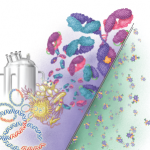The researchers identified 20,976 users of TNF inhibitors, including 983 with a prescription claim for the biosimilar version of infliximab. The proportion of claims for the biosimilar increased to 19% through March 2014. Before November 2012, each month there were 33 more infliximab claims, 44 more etanercept claims and 50 more adalimumab claims. After the biosimilar was introduced, there were significant changes in the slopes for trends in usage and additional increases of nine more claims per month for the branded and biosimilar versions of infliximab. Comparatively, there were decreases of 52 claims per month for etanercept and 21 claims per month for adalimumab.
During the first 15 months since the biosimilar was introduced in South Korea, one-fifth of all infliximab claims were for that version as opposed to the branded version. The authors concluded that introducing the biosimilar infliximab may affect the use of other TNF inhibitors, and the magnitude of change will likely differ between what was seen in South Korea and what is experienced in other countries.
Implications
“Our study shows the utilization patterns of this biosimilar drug [infliximab] compared to the branded infliximab and a few other TNF inhibitors used for the same indications,” Dr. Kim explains. “It illustrates how the biosimilar infliximab has been playing a role in the market for patients. … In [South Korea], we observed that the uptake of the biosimilar is about 20% after 15 months of being available in the market.”
Because of the potential cost savings for patients, the uptake seen in the study was somewhat slower than expected, Dr. Kim says. The explanation, she says, is likely that the cost difference between the branded and biosimilar versions of infliximab was quite small for the majority of the study period. Initially, the biosimilar was priced about 30% less than the branded medication, but after about a month, the price of the branded version decreased. Dr. Kim hypothesizes that if there had been a bigger pricing difference, the per-person adoption may have been higher.
This study and other research demonstrate that it’s not easy to predict what type of financial effect biosimilars will have on the market until they are available. The expectation is that with increased competition, prices will drop. According to a 2014 study by the RAND Corp., cost savings in Europe may exceed $44 billion in the next 10 years, and discounts for biosimilars could be more than 35% compared with the brand-name drugs.



